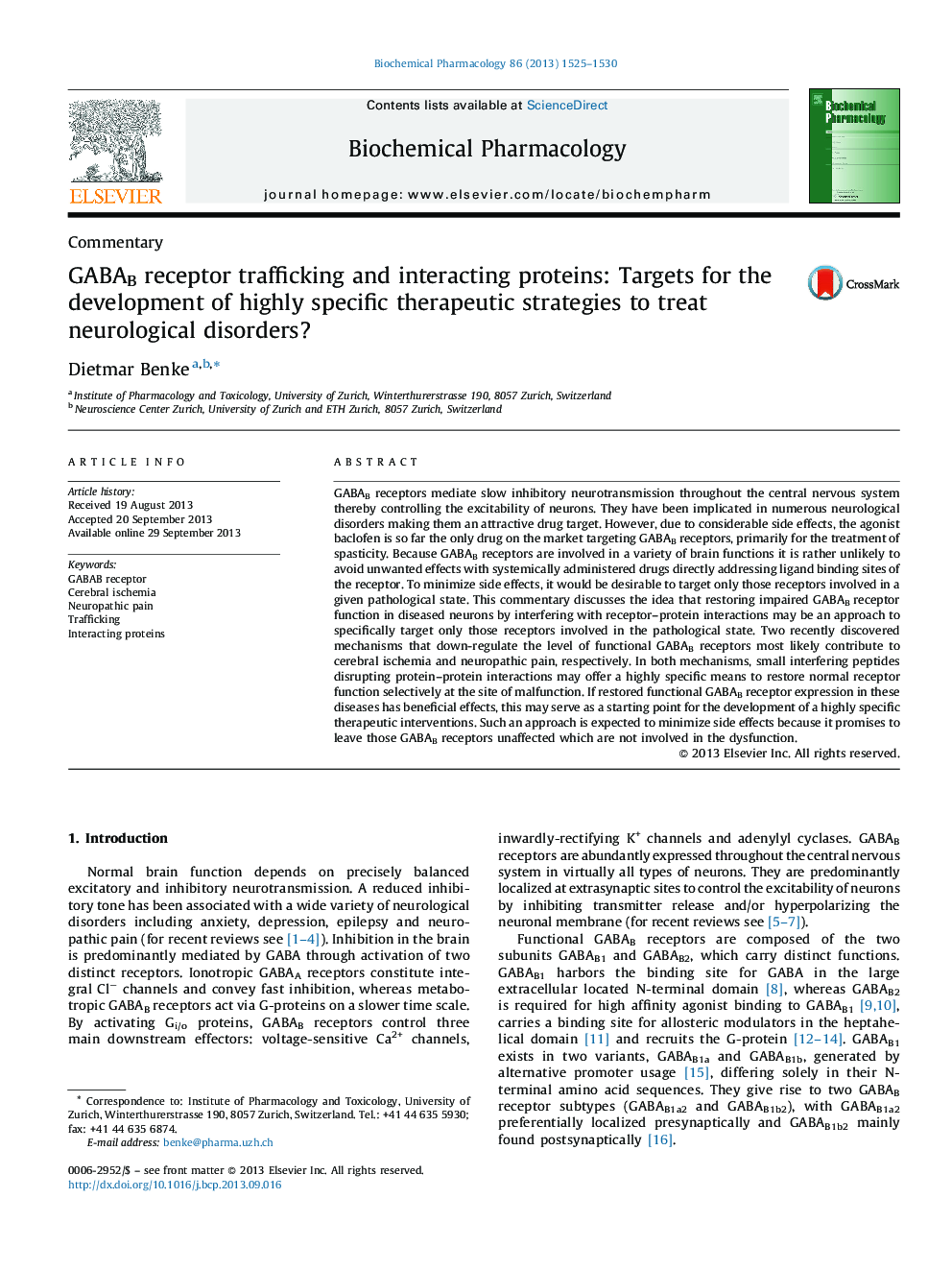| Article ID | Journal | Published Year | Pages | File Type |
|---|---|---|---|---|
| 2512446 | Biochemical Pharmacology | 2013 | 6 Pages |
GABAB receptors mediate slow inhibitory neurotransmission throughout the central nervous system thereby controlling the excitability of neurons. They have been implicated in numerous neurological disorders making them an attractive drug target. However, due to considerable side effects, the agonist baclofen is so far the only drug on the market targeting GABAB receptors, primarily for the treatment of spasticity. Because GABAB receptors are involved in a variety of brain functions it is rather unlikely to avoid unwanted effects with systemically administered drugs directly addressing ligand binding sites of the receptor. To minimize side effects, it would be desirable to target only those receptors involved in a given pathological state. This commentary discusses the idea that restoring impaired GABAB receptor function in diseased neurons by interfering with receptor–protein interactions may be an approach to specifically target only those receptors involved in the pathological state. Two recently discovered mechanisms that down-regulate the level of functional GABAB receptors most likely contribute to cerebral ischemia and neuropathic pain, respectively. In both mechanisms, small interfering peptides disrupting protein–protein interactions may offer a highly specific means to restore normal receptor function selectively at the site of malfunction. If restored functional GABAB receptor expression in these diseases has beneficial effects, this may serve as a starting point for the development of a highly specific therapeutic interventions. Such an approach is expected to minimize side effects because it promises to leave those GABAB receptors unaffected which are not involved in the dysfunction.
Graphical abstractFigure optionsDownload full-size imageDownload as PowerPoint slide
